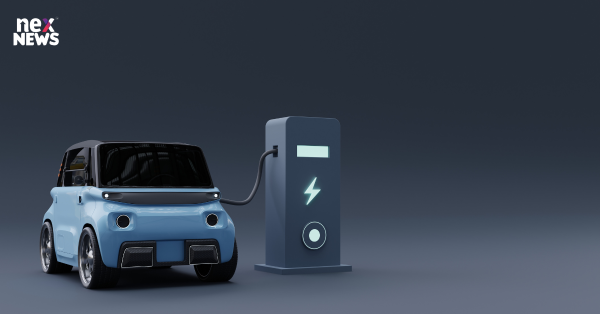As the world seeks sustainable alternatives to traditional fossil fuel-powered vehicles, the electric vehicle (EV) market is experiencing a remarkable transformation. This shift is not only driven by advancements in EV technology but also by the global infrastructure that supports these vehicles. From charging stations to battery innovations, the infrastructure is playing a pivotal role in propelling the electric vehicle market forward.
Introduction
Electric vehicles have gained tremendous popularity due to their eco-friendliness and cost-effectiveness. As consumers and governments alike prioritize sustainability, the electric vehicle market is poised for significant growth. However, this growth wouldn't be possible without the critical role that infrastructure plays in shaping the EV landscape.
The Rise of Electric Vehicles
Over the past decade, electric vehicles have evolved from being niche products to mainstream transportation options. Major automakers are investing heavily in electric vehicle development, resulting in models that cater to various market segments. The growing concern over air pollution and carbon emissions has accelerated the adoption of EVs as a cleaner alternative to traditional internal combustion engine vehicles.
The Role of Infrastructure
Charging Networks
One of the cornerstones of the EV revolution is the establishment of robust charging networks. Charging stations are cropping up across urban centers, highways, and commercial spaces, making it convenient for EV owners to charge their vehicles. These networks offer different levels of charging, catering to diverse user needs.
Battery Technology
Advancements in battery technology have significantly extended the range of electric vehicles. High-capacity lithium-ion batteries power these vehicles, enabling them to travel longer distances on a single charge. Moreover, innovations such as regenerative braking help improve overall energy efficiency.
Government Initiatives
Governments around the world are playing a crucial role in supporting the EV market's growth. Incentives such as tax credits, rebates, and reduced registration fees are encouraging consumers to make the switch. Additionally, strict emission standards are compelling automakers to invest in cleaner mobility solutions.
Types of Charging Stations
Level 1 Charging
Level 1 charging involves plugging an EV into a standard household outlet. While it's the slowest charging option, it's ideal for overnight charging at home.
Level 2 Charging
Level 2 charging utilizes higher voltage to charge an EV faster. Many public charging stations and residential chargers offer Level 2 charging, making it a convenient choice for daily charging needs.
DC Fast Charging
DC fast charging stations provide rapid charging by delivering a high voltage directly to the vehicle's battery. This option is perfect for long-distance travel, as it can provide a significant charge in a short amount of time.
Wireless Charging Advancements
Wireless charging technology is emerging as a game-changer for electric vehicles. With this technology, EVs can be charged without the need for physical cables. Wireless charging pads embedded in parking spaces enable effortless charging, further integrating EVs into daily life.
Battery Innovations
Solid-State Batteries
Solid-state batteries are on the horizon, promising higher energy density, faster charging times, and improved safety. These batteries use solid electrolytes, eliminating the need for liquid electrolytes found in traditional lithium-ion batteries.
Extended Range Batteries
Battery innovation aims to address "range anxiety," a concern among EV owners about running out of charge. Extended range batteries with larger capacities are alleviating this concern and making EVs a viable option for longer trips.
Government Support and Regulations
Incentives for EV Adoption
Governments incentivize EV adoption through tax credits and rebates. These financial incentives reduce the upfront cost of EVs, making them more appealing to consumers.
Emission Standards
Stringent emission standards encourage automakers to transition to electric vehicles to meet environmental targets. This shift not only reduces greenhouse gas emissions but also prompts technological advancements in EV production.
Challenges and Solutions
Range Anxiety
While EVs have made significant strides in range capabilities, concerns about running out of charge still linger. Increasing the number of charging stations and further advancing battery technology can alleviate these concerns.
Charging Speed
Although fast-charging options exist, further improvements are needed to make charging as quick and convenient as refueling a conventional vehicle. Research into ultra-fast charging and battery swapping could revolutionize the charging experience.
The Future Landscape
The future of the electric vehicle market looks promising. With ongoing technological advancements and the commitment of governments and industries, EVs are expected to become more affordable, accessible, and integrated into our daily lives. As charging infrastructure continues to expand, the transition to electric mobility will only accelerate.
Conclusion
The global infrastructure supporting electric vehicles is driving a monumental shift in the automotive industry. From charging networks to battery innovations, the transformation is reshaping how we think about transportation. As governments, automakers, and consumers collaborate, the electric vehicle market is charging ahead toward a sustainable and electrifying future.

